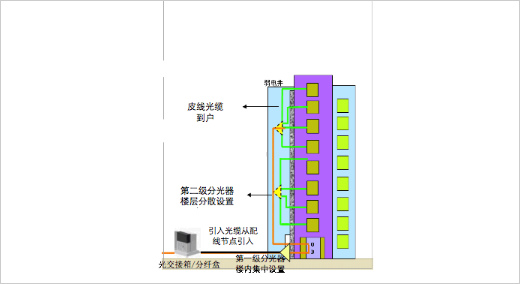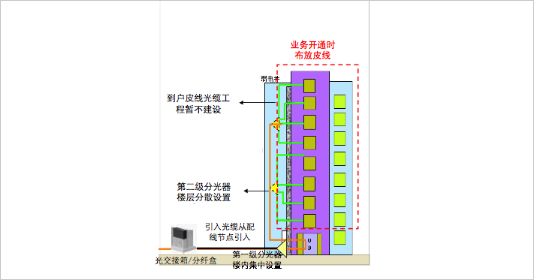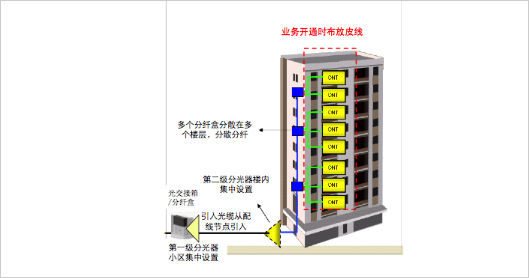AC 5 Axis Waterjet Cutting Machine Marble Cutting Machine,High Pressure Water Cutter,Water Jet Cleaning Machine,Stone Cutting Machines For Sale FOSHAN YUANLI PRECISION MACHINERY CO.,LTD , https://www.ylwaterjet.com





Common materials for communication lines are calculated
Number of trunking strips = length of cable (m) / 3.8 *1.01; one Ф98*3M leads to galvanized steel pipe and three Ф100*30*3 lead pipe clamps; one hundred meters of hanging wire opens 23Kg steel strands (when wall hanging wire ), one kilometer hanging wire open 221.27Kg (when overhead hanging wire); number of fiber optic cable hooks = length of cable laying (km) × 2060 (35mm specifications when hanging three optical cables), number of steel hooks (new hanging wire) = cable length (m) * 2; number of steel hooks (little hanging wire) = cable length (m) * 2 * 0.3; connection distribution box, optical cross-head pigtail (FC), two ends 1 double head 3 meters, FC-FC (ODF frame used to open 5 meters long); connected to the split box with square head pigtail (SC), the end two cores with a double head 3 meters, SC-SC; Number of fiber optic cable ends = actual fiber end number; anti-cement 2 open 0.5 kg; one cable sign board open 2 3*200mm nylon cable ties; one cable reserved for 1 pay cable hoop + same program hanging wire + one Lining ring + 4 steel hinge clamps; install 1 distribution box to open 3 12×100 explosion screws;
A single strand 7/2.2 pull line (plywood method) open 3.02Kg steel hinge line +1 set of ground anchor iron handle +1 set of cement puller tray +1 set pull hoop hoop +2 pull line lining ring (3 shares) +2 vice Eye double groove splint +0.22Kgφ4.0 galvanized iron wire +0.30Kgφ3.0 galvanized iron wire +0.02Kgφ1.5 galvanized iron wire;
A single strand 7/2.6 pull wire (plywood method) open 3.80Kg steel hinge line +1 set of ground anchor iron handle +1 set of cement pull wire tray +1 set pull hoop hoop +2 pull wire lining ring (5 shares) +2 vice Eye double groove splint +0.22Kgφ4.0 galvanized iron wire +0.55Kgφ3.0 galvanized iron wire +0.04Kgφ1.5 galvanized iron wire;
A single strand 7/3.0 pull line (plywood method) open 5.0Kg steel hinge line +1 set of ground anchor iron handle +1 set of cement pull wire tray +1 set pull hoop hoop +2 pull wire lining ring (5 shares) +4 vice Eye double groove splint +0.22Kgφ4.0 galvanized iron wire +0.45Kgφ3.0 galvanized iron wire +0.04Kgφ1.5 galvanized iron wire;
A cement rod is faked and opened with a 5-share liner + 4 U-clamps (size 8) + 0.25Kg7, 2.2 steel strands + 0.016Kgφ1.5 galvanized iron wire (the dummy terminal cable material needs to be opened separately);
A wall hanging wire intermediate support opens 1 intermediate support + 2 expansion bolts +1 pair single groove splint +1 Φ12×50mm head piercing
The optical splitter of the optical junction box and the distribution box is of a box type, and the optical splitter of the optical splitter box is of a plug-in type.
Wall hanging every two meters to do two terminals to do 8 intermediate support.
Pull wire complete connection: pull wire hoop - pull wire lining ring (7/2.2 steel hinge wire for 3 strands when pulling wire, use 7/2.6 for pull wire when using 5 strands of lining ring) - 3 eyes double groove splint (for splint method) - galvanized steel hinge line - 3 eyes double groove splint (for splint method) - cable lining ring (7/2.2 steel hinge line for 3 strands when pulling wire, use 7/ 2.6 for the pull wire with 5 strands of the ring) - pull rod - pull the disc (the connection between the pull rod and the pull disc: the split ring of the pull rod into the U-ring of the pull disc, plated with Ф 4.0 The zinc wire tightens the ring opening)
Cable suspension connection
1. One knot: two liner rings, four double groove splints
2. T-junction: a double-slot plywood, a single-slot plywood, a backing ring, a 50 (mm) nail
The length of the T-junction cable suspension wire is generally not more than 10 meters, and the false termination is performed on the first pole. More than 10 meters, poles should be added at appropriate locations
Cross knot: two double-slot splints, one 100 (mm) nail.
insulator:
Multi-ditch insulator: It is a kind of fixing device part that leads to the user's insulation wire by the cable branching equipment. The commonly used three-slot insulator
Wall hanging wire installation method
First understand the intermediate support and terminal support
Intermediate support: two-wire or L-shaped bracket and expansion bolts that hold it
Terminal support: square wall and expansion bolts
1) How to install the hanging wire on the intermediate support
50 (mm) nail and three eye single groove splint
2) Installation method of the hanging wire on the terminal support: a three-eye double-slot splint and a three-ring ring
Cable selection
GJYXFHA-2B6a pipeline 2-core cable (for tight pipeline resources)
GYSTS-6B1 outdoor pipe optical cable
GYSTA-6B1 outdoor aerial cable
GJPFJH-12B1 indoor shaft splicing cable
Split mode and installation location scene:
1. New multi-storey residential building (10 floors or less)
Scene characteristics: There are usually multiple buildings, each building has 2-3 building holes, 2-3 households in a single storey, 90% of users in a single building <64 households.
Planning points: full coverage or thin coverage, two-stage splitting, no splitting
2. Existing multi-storey residential renovation (under 10 floors)
Scene characteristics: There are usually multiple buildings, each building has 2-3 building holes, 2-3 households in a single storey, 90% of users in a single building <64 households.
Planning points: thin coverage, two-stage splitting, no splitting
3. New mid-rise and high-rise residential buildings (10-20 floors)
Scene features: Newly built medium and high-rise residential buildings with floor heights between 10 and 20 floors; single building users have higher density, generally >64 households.
Planning points: full coverage or thin coverage, first-level splitting, concentrated splitting, and scattered floor splitting.
1. Considering that the number of single-station users has met the 1:64 maximum split ratio requirement, the first-level splitting can be directly adopted, and the splitter is set in the split box of the indoor access room or the centralized point in the building;
2. The splitting point in the building to each floor adopts a large core vertical optical cable, and some floors are selected for distributed fiber distribution. Generally, the fiber distribution box/fiber splitting box is set every 5~10 layers;
4. Existing middle and high-rise residential renovation (10-20 floors)
Scene features: Newly built medium and high-rise residential buildings with floor heights between 10 and 20 floors; single building users have higher density, generally >64 households.
Planning points: thin coverage, two-stage splitting, and the second level after the concentrated splitting in the building, select the appropriate floor to distribute the fiber.
In general, to ensure the maximum split ratio of 1:64 or higher, the two-stage split mode is adopted: the first-stage splitter should be set centrally, and it is recommended to set it in a building in the center of the cell or in a building near the center; The splitter deployment is centralized in a single building. For the case where the buildings are very scattered and the floor distance is large, the first-stage beam splitter central node may be added in the divided area;
5. New high-rise residential buildings (more than 20 floors)
Scene characteristics: Newly built medium and high-rise residential buildings with a floor height of more than 20 floors; the density of single-row buildings is relatively high, generally far greater than 64 households.
Planning points: full coverage or thin coverage, two-stage splitting, and second-level scattered floor splitting.
1. Considering that the number of single-user users is much larger than the maximum split-light ratio requirement of 1:64, if the first-level splitting is adopted, the number of incoming optical cables introduced into a single building may be large, so two-stage splitting is considered. The first-level splitter is set in the access box of the building or the splitting box at a certain point in the building; the second-stage splitter selects some floors for distributed splitting, and generally sets the splitter/split every 5~10 layers. A second-stage optical splitter is built in the box, and a large-core vertical optical cable can be used for the first-level splitting point in the building to save the cost of the first-level splitting point in the building, and the optical cable is not used;
6. Existing high-rise residential renovation (more than 20 floors)
Scene characteristics: Newly built medium and high-rise residential buildings with a floor height of more than 20 floors; the density of single-row buildings is relatively high, generally far greater than 64 households.
Planning points: thin coverage, two-stage splitting, and second-level scattered floor splitting.
7. New construction and renovation of commercial buildings
Scene characteristics: New or remodeled commercial buildings. The main internal customers are government and enterprise customers. Due to the changes in the interval between the building and the frequency of changes in the rental, the density of users in a single building may change greatly. The distribution density and distribution location of the internal users.
Planning points: thin coverage, one or two levels of splitting, floor dispersion or split distribution.
